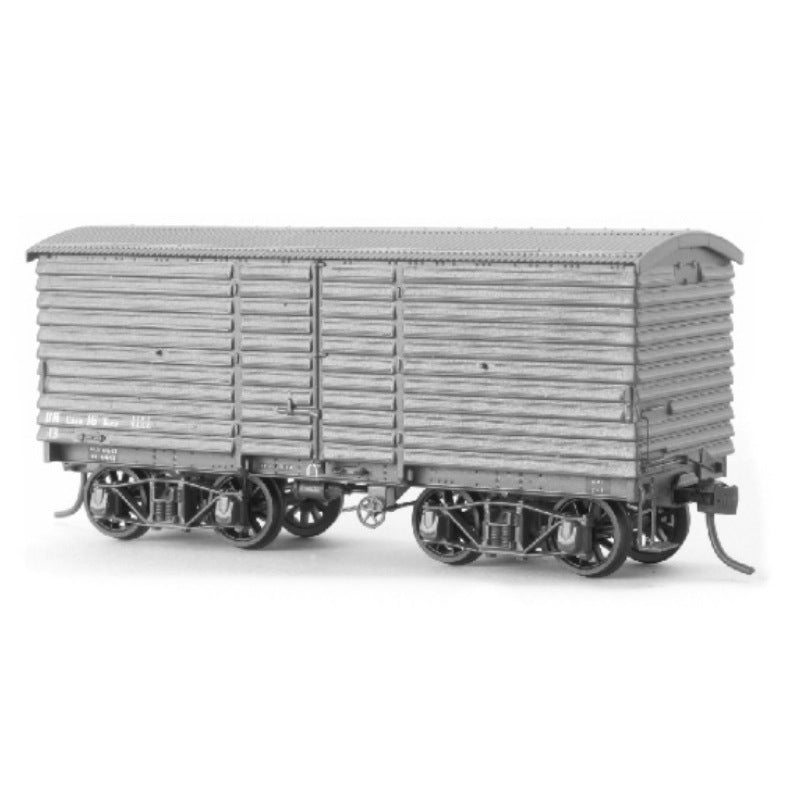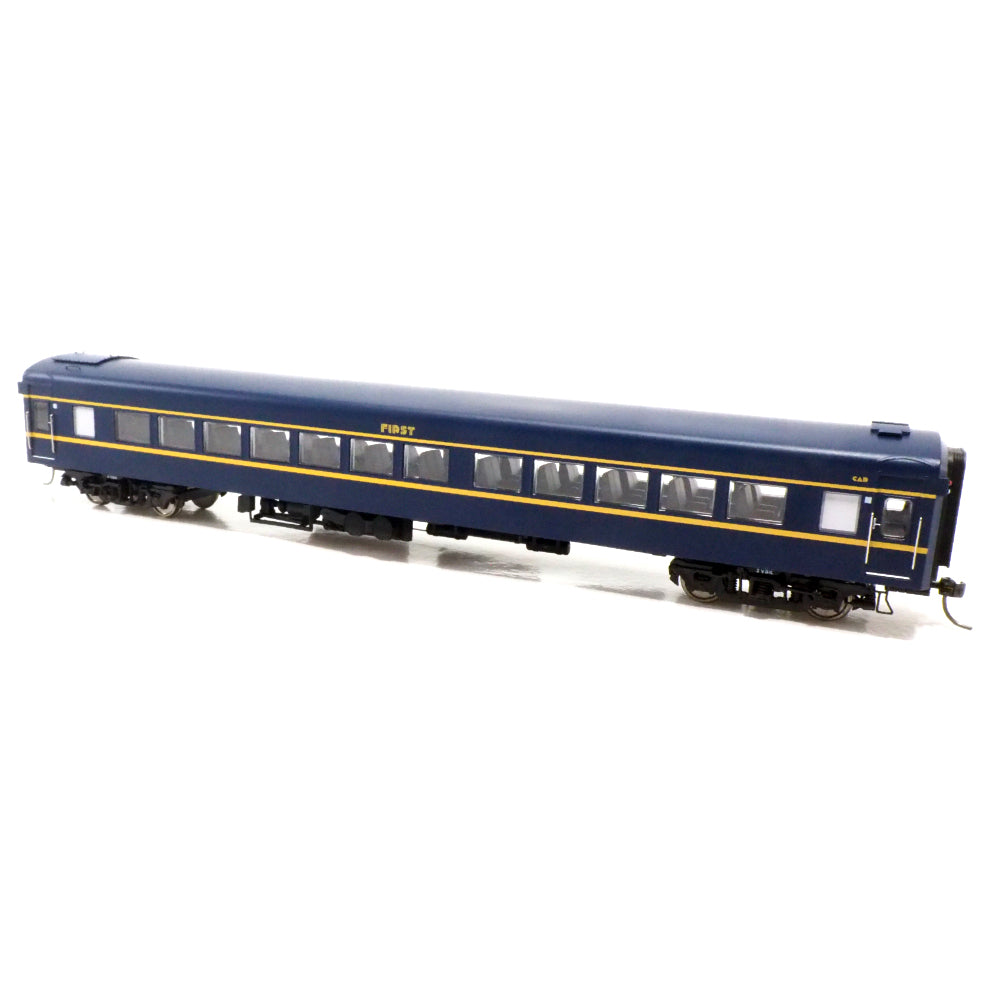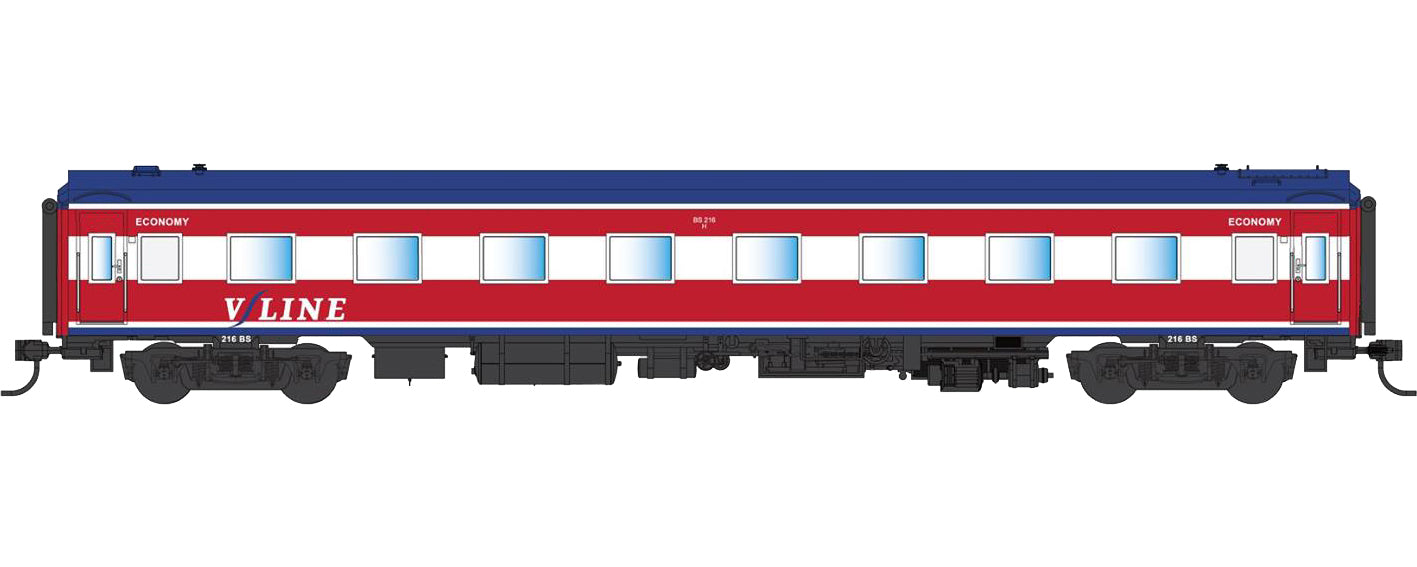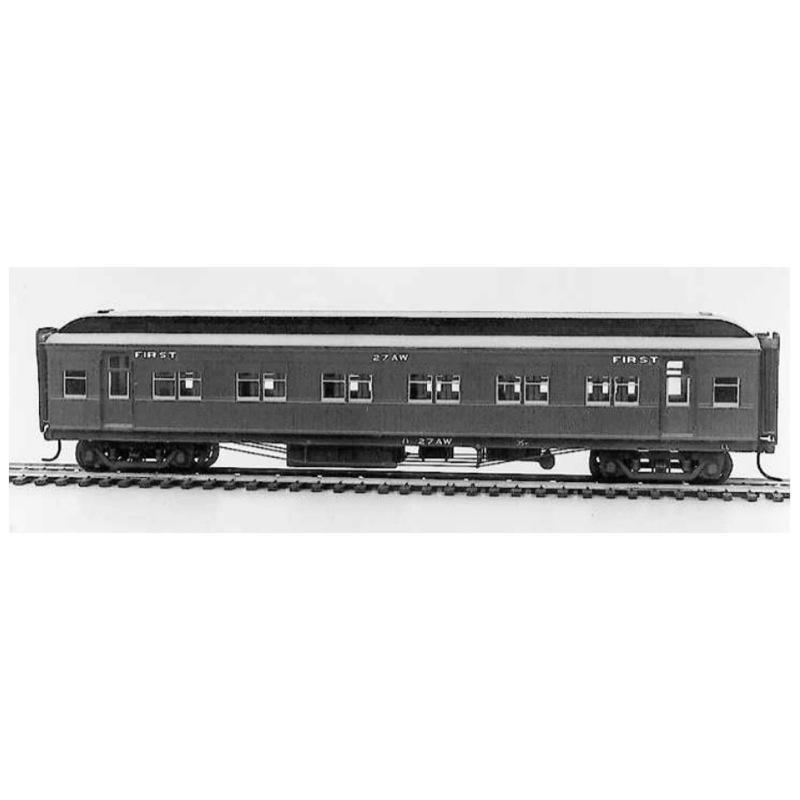
Steam Era Models R15 HO AW First Class Passenger Car Kit
AW First Class Passenger Car Kit
The 58' clerestory roofed corridor passenger cars represented by this kit were introduced into Victorian Railways service from 1911 to 1922. Thirty five AW first class, thirty nine BW second class and forty seven ABW composite cars of this type were constructed and further cars with semi elliptic roofs (some 64'long) were produced 1924-26. The cars were utilised on main, cross country and branchline service and with the 71' E stock, provided the backbone of the V.R. passenger fleet for more than 50 years. Originally gas lit, all W cars were converted to electric lighting from the mid 1920's. They also initially featured bevelled mirrors above the windows and three horizontal rails across the lower window panes. These features were eliminated in the 1920's. Screw couplings were replaced with auto couplings and transition hooks in the 1930's.
Our model represents a car in its final condition as operating from the early 1950's to the mid 1980's.
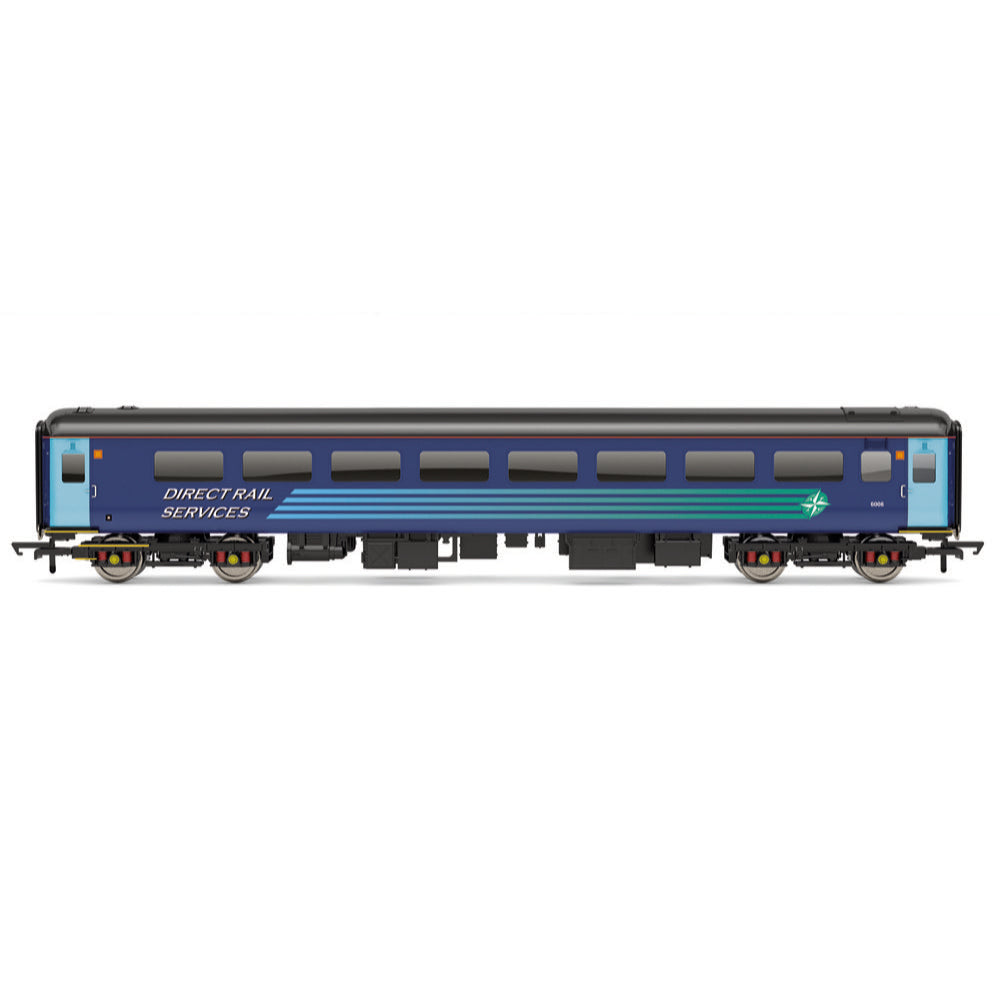
Hornby R40331B OO DRS Mk2F Standard Open 6008
The Mk2 Coach was introduced to the British Railway in 1964, designed to be stronger and more resistant to corrosion than their predecessors yet also reducing maintenance costs. A revised painting method coincided with a switch from BR maroon and Southern Region dark green to a blue and grey livery.
1876 Mk2 Coaches were produced by BREL at Derby Litchurch Lane Works between 1963 and 1975, with many remaining in service performing departmental work and charter services. Mk2 Coaches were also widely exported and remain in mainline service in New Zealand as of 2020. Coaches and multiple units based upon the Mk2 design have also operated in Ireland, Taiwan and Kenya.
Specifications
- Item Length - Without Packaging (cm): 26.8
- Item Height - Without Packaging (cm): 5
- Item Width - Without Packaging (cm): 3.5
- Item Weight - Without Packaging: 0.13
- Item Scale: 1:76 Scale 00 Gauge
- Finish: Painted
- Colour: Blue
- Operator: DRS
- Designer: BR
- Livery: DRS
- Minimum Curve (mm): Radius 2
- Number of Parts: 1
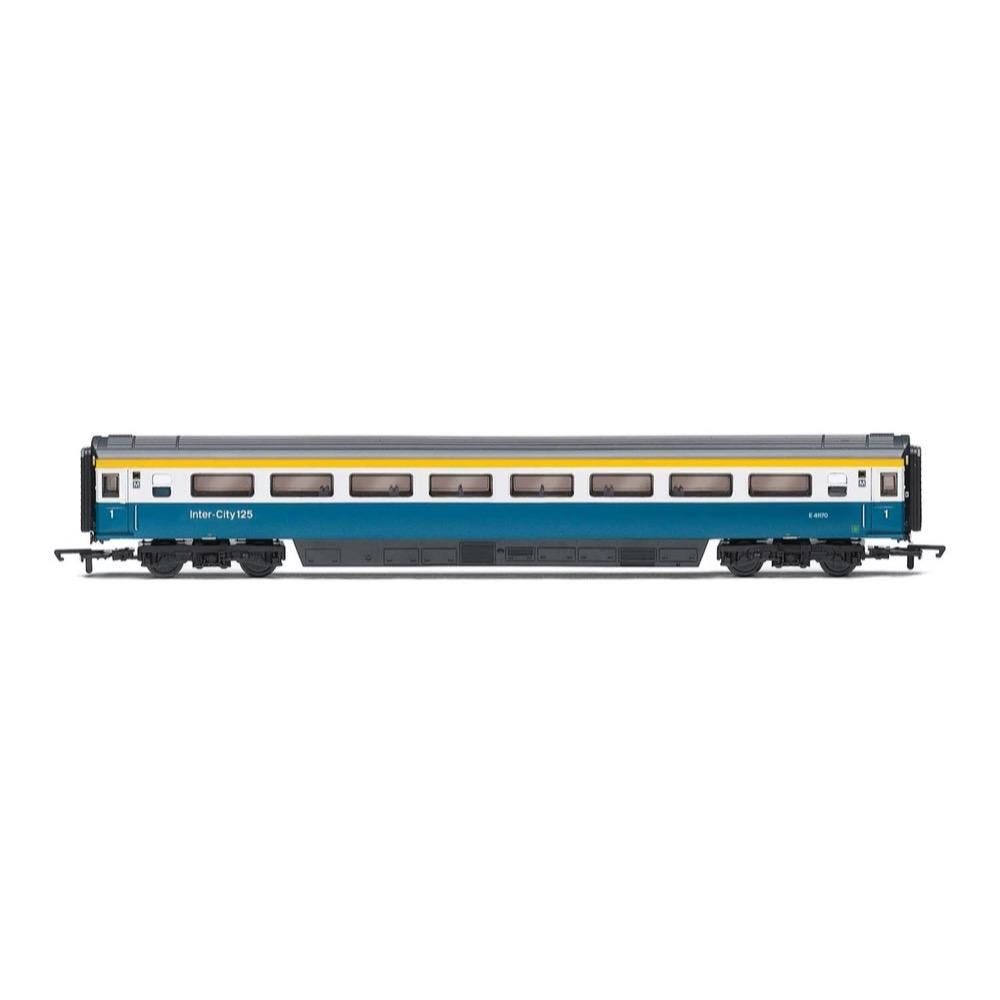
Hornby R40041 OO LNER (BR) Mk3 Trailer First Open (TFO) (Farewell Tour) Coach M 41170
In-order to allow running at 125 mph on Britain's Victorian era railways, new rolling stock was needed by British Railways. Significant improvements over the Mk2 included new secondary air suspension between the bogies and the coach body as well as aerodynamic skirting on the underframe.
Mk3 coaches are 75ft (23m) long, enabling far greater capacity than older coaches. Mk3 coaches also incorporate disk breaks and wheel slip protection enabling faster deceleration. The first Mk3 coaches to be delivered were used as part of the HST prototype along with the two Class 41 diesel power cars in 1972. Mk3 coaches entered service in 1975 along with the Class 43 forming the iconic InterCity 125 trainset. After the HST Mk3 coach variant was introduced, further Mk3 coaches were introduced to the West Coast Mainline for use as part of locomotive hauled trains. Whilst Mk3 stock is standard for HST units, the standard locomotive hauled stock is Mk3a. Mk3a stock differs from Mk3 stock due to the inclusion of buffers as well as a different electrical system that uses motor generator units in each coach to power air conditioning and other ancillaries Mk3a stock was built until 1984, before 3B stock with improved seating and lighting was built from 1985 to 1988.
After an iconic life of service on the East Coast Main Line, LNER removed its Inter-City 125s from service at the end of 2019. To celebrate LNER announced a farewell rail tour using power cars 43206 and 43312 along with 7 Mk3 coaches. The entire train was repainted in the original blue and yellow livery and the tour lasted for four days.
Specification
- Item Length - Without Packaging (cm): 30.3
- Item Height - Without Packaging (cm): 5
- Item Width - Without Packaging (cm): 3.5
- Item Weight - Without Packaging: 0.19
- Item Scale: 1:76 Scale 00 Gauge
- License: No
- Finish: Painted
- Colour: Blue
- Gauge: OO
- Operator: LNER
- Designer: BREL
- Livery: BR Corporate Blue
- Minimum Curve (mm): Radius 2
- Number of Parts: 1
- Motor: 5 pole skew wound

Hornby TT4009A TT LMS 57 Brake Third 5832
At the start of the 1930s the LMS abandoned the ‘Small Engine Policy that it had inherited from one of its largest predecessors, the Midland Railway. The abandoning of this policy led to some of the most famous Stanier and LMS designs such as the Jubilee, Black 5 and Duchess classes. To accompany this shift in ethos, new coaches were constructed for the LMS, with the 57’ coaches being built between 1931 and 1932.
These new coaches were steel clad, the first such for the LMS and had seating for 56, 300 such examples were built. In LMS service these coaches were painted in their striking maroon livery with LMS insignia adorning the side. The coaches, being relatively new at the time of nationalisation lasted well into the swansong days of BR, appearing in both its carmine and cream livery and later BR Maroon when BR decided to shift aesthetics back to regional recognition.
Specifications
- Length - 14.4cm, Width - 2.2cm, Height - 3cm
- 1:120 Scale
- Gauge: TT
- Minimum Curve (mm): Radius 1
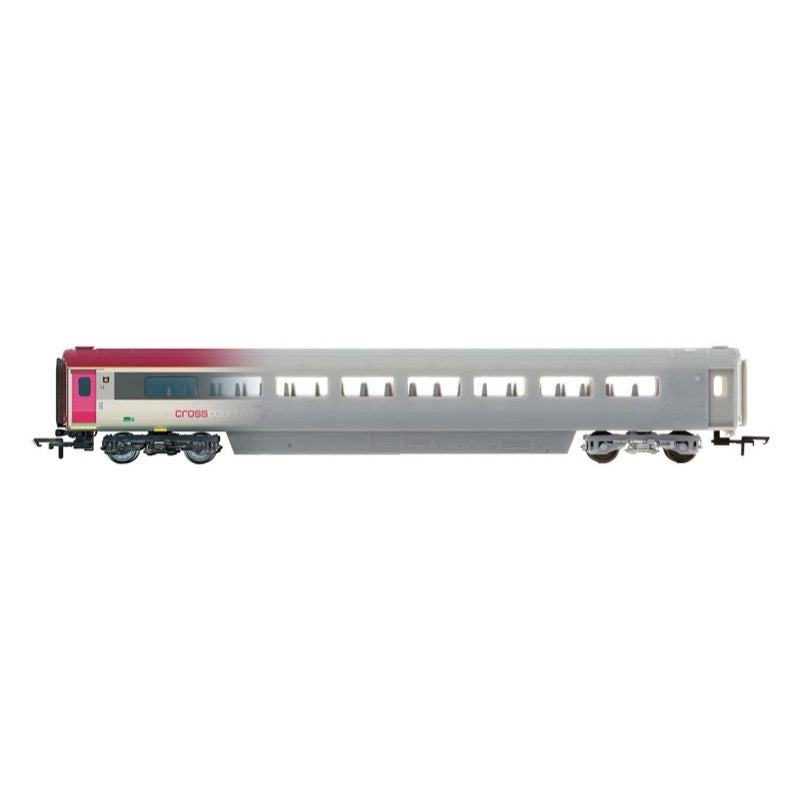
Hornby R4940G Cross Country Trains Mk3 Sliding Door TS - Era 11
Cross Country Trains, Mk3 Sliding Door TS 42051 - Era 11
Specification
- Item Scale: 1:76 Scale 00 Gauge
- Finish: Painted
- Gauge: OO
- Operator: CrossCountry
- Livery: Grey & Magenta
- Coupling: NEM / Tension lock
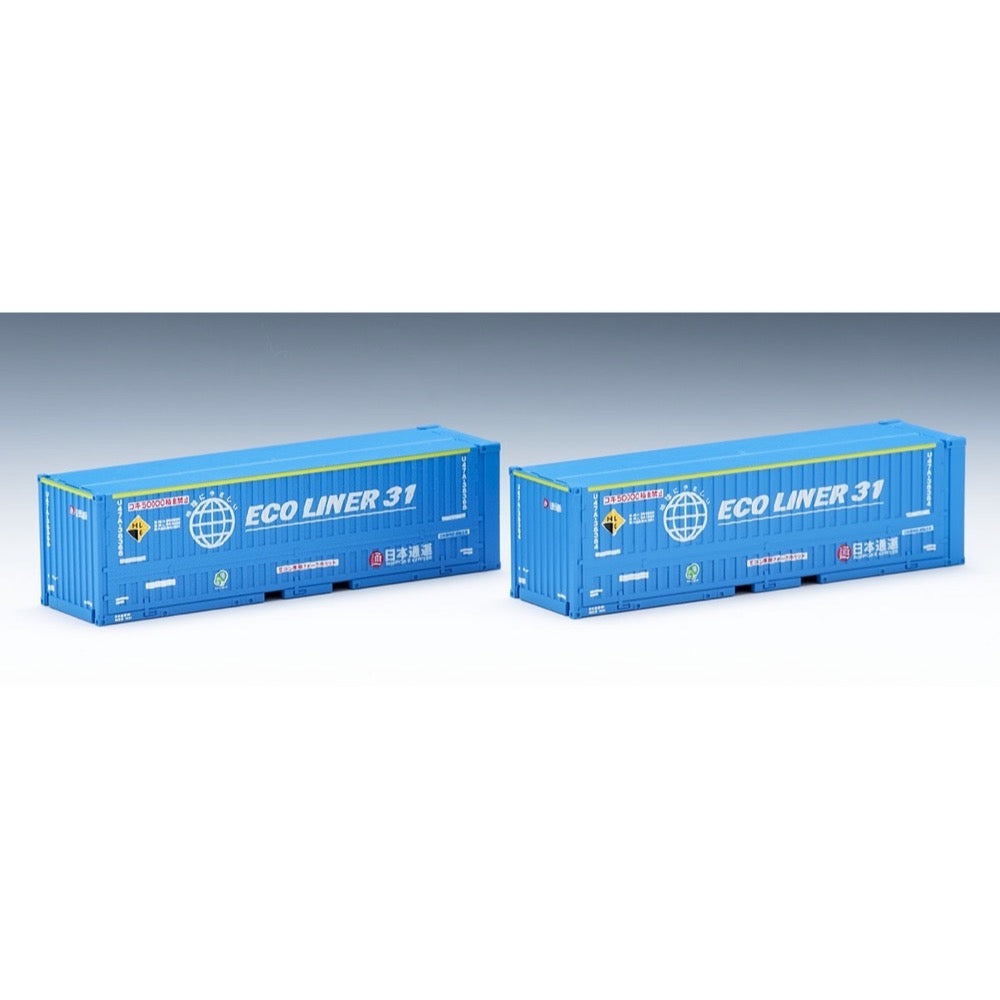
Tomix 3170 N U47A-38000 Nittsu?Blue?2pcs.
The U47A container is a privately owned 31-foot wing container.
The U47A container belonging to Nippon Express is painted white using heat-insulating paint, and in addition, containers with a similar design painted blue are in use nationwide.
Features
- Can be mounted on Koki 107 and other container freight cars with one touch
- "ECO LINER 31" logo and numbers (U47A-38368, U47A-38384) are printed
- Ecorail mark is printed
- 2 pieces included
Contents
- U47A-38368
- U47A-38384
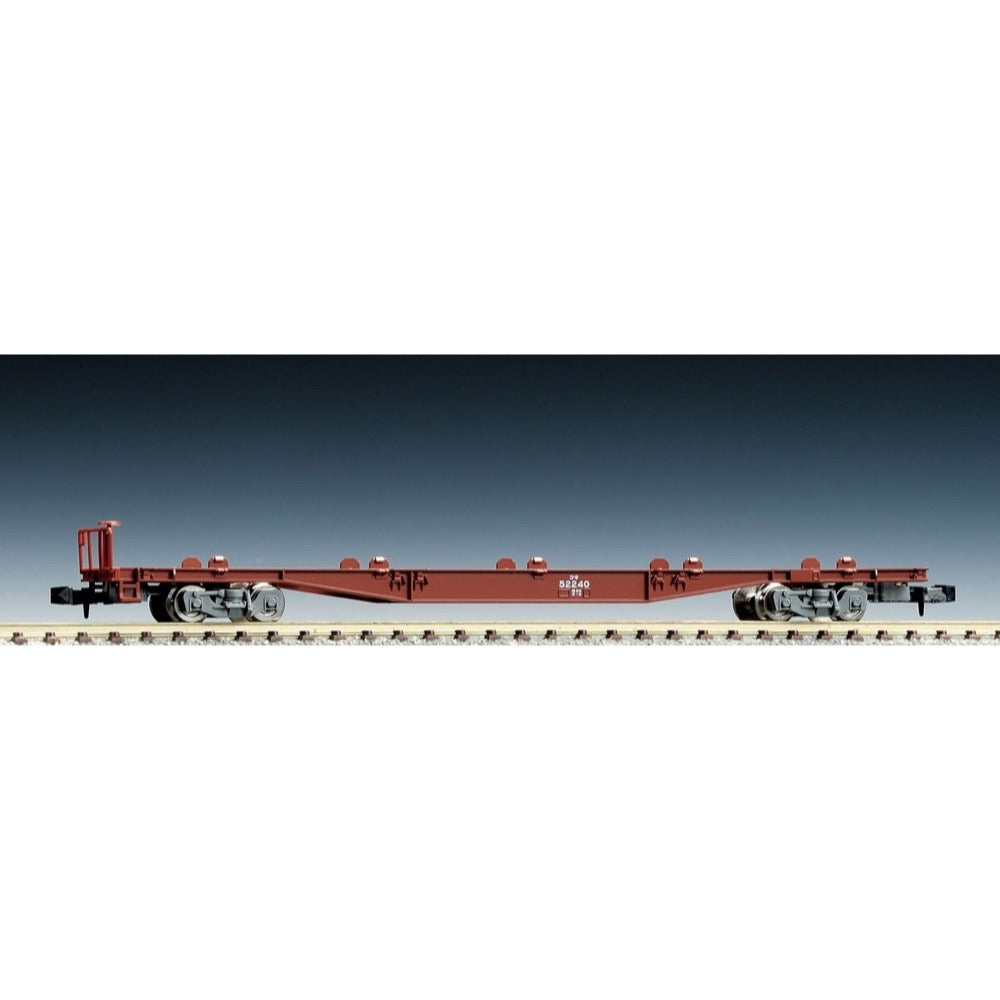
Tomix 2742 N 2742 Koki 50000 Grey Boggie
The Koki 50000 series appeared during the Japan National Railways era, and many of these cars are still in use today as mainstay vehicles even after the JR system was established.
The bogies have been changed to gray.
Features
- See-through frame
- Reproduces the gray color of the bogie
- Can carry various containers (sold separately)
- Suitable for various locomotives such as EF66 and EF210
- Handrails are installed at the factory
- Reflector parts included
- Car number printed
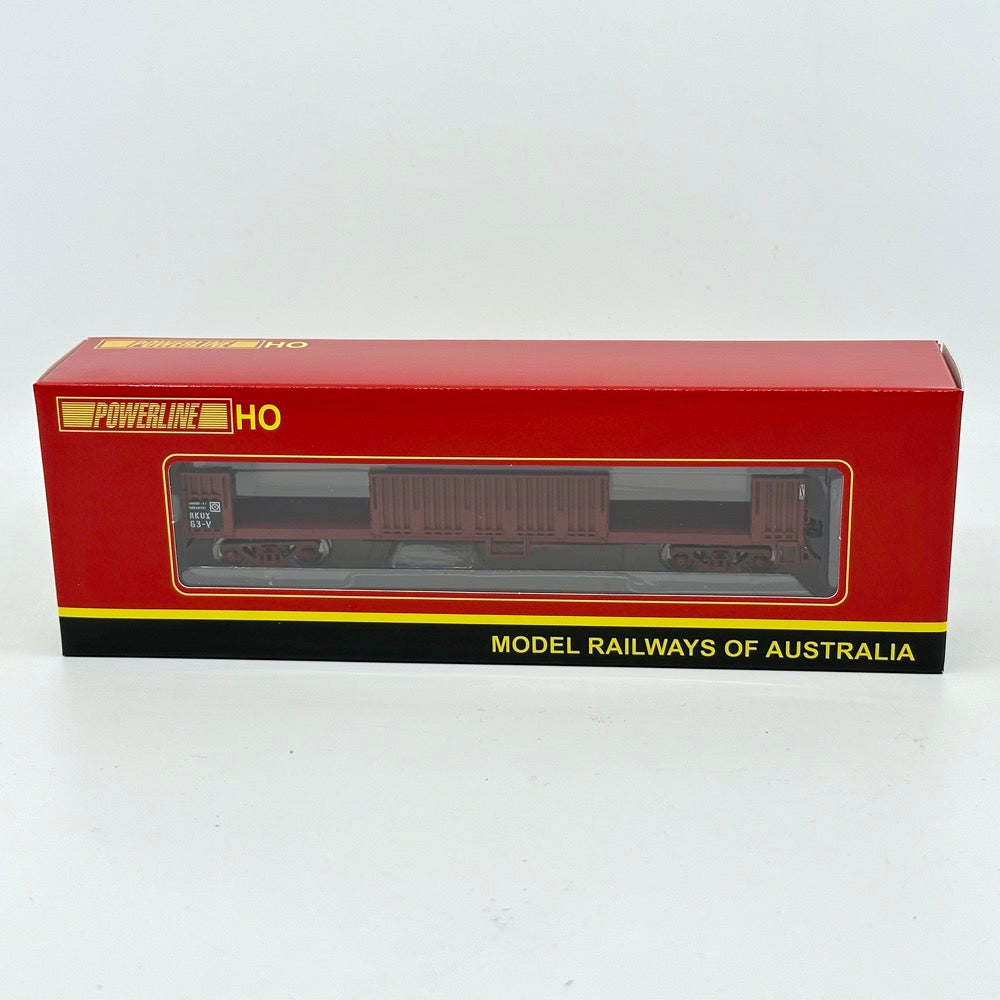
Powerline PD-612C-63 RKUX-63V No Logo Red/Brown Red-Oxide Open Wagon
Authentic original Powerline Rolling Stock model train item. Premade and painted scale Australian rolling stock for HO and OO guage railroad sets. High quality paint scheme and construction, packaged in a sturdy box.
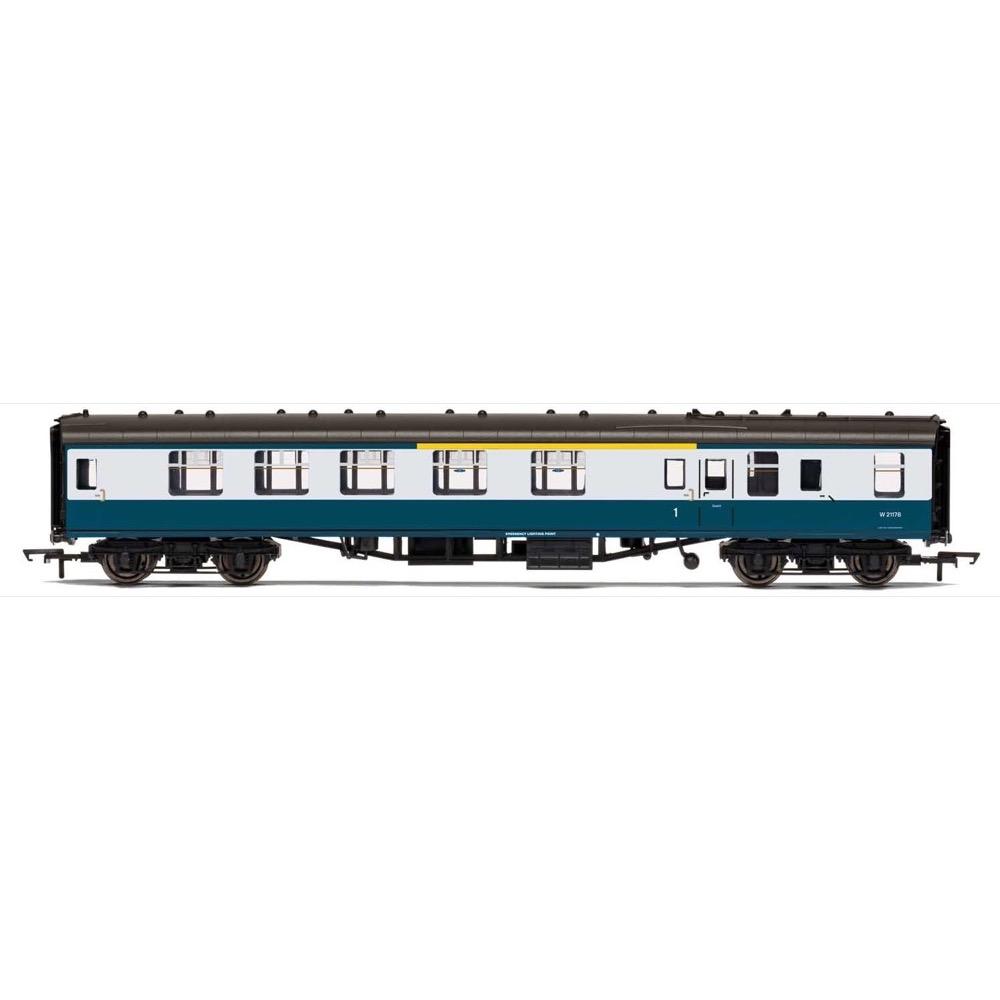
Hornby R40023 OO BR Mk1 Brake Composite Corridor W 21178
The first standardised railway carriage design built by British Railways, the Mark 1 coach introduced in 1951 could be found across Britain's railway network and continued to be produced until 1963, and even later in the form of multiple units and non-passenger stock. Along with being widely deployed, Mk1 coaches were built in various places including Derby, Doncaster, Eastleigh, Swindon, Wolverton and York.
Most Mk1 coaches had 63ft 5in long underframes with 64ft 6in long bodies, although some were built shorter to be used on tighter curves where large overhangs would otherwise have prohibited running. In 1977 a reduction in the number of fatalities on British railways since 1955 was attributed to the introduction of the Mk1 coaches due to their steel build, strong underframe, and buckeye couplings making them far safer in the event of an accident.
Mk1 coaches started to be withdrawn from widescale service in the 1990s, although in some regions, particularly in the south, Mk1 base multiple units continued to be used well into the 2000s. Network rail continue to use modified Mk1 coaches for various departmental duties and rail tour operators continue to use Mk1 coaches on specially organised services.
The Mk1 BCK is a Mk1 Brake Composite Corridor coach meaning seating is split into compartments connected by a corridor on one side. The coach provided both first- and second-class compartments. Along with passenger seating this coach also houses a compartment containing equipment used to help brake the train.
Specification
- Item Length - Without Packaging (cm): 26.5
- Item Height - Without Packaging (cm): 5
- Item Width - Without Packaging (cm): 3.5
- Item Weight - Without Packaging: 0.14
- Item Scale: 1:76 Scale 00 Gauge
- License: No
- Finish: Painted
- Colour: Blue
- Gauge: OO
- Operator: BR
- Designer: BR
- Livery: BR Corporate Blue
- Minimum Curve (mm): Radius 2
- Number of Parts: 1


